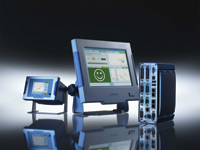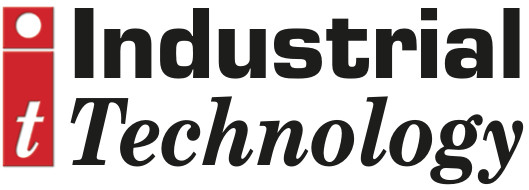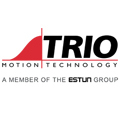
Posted to News on 21st May 2018, 00:00
Piezoelectric sensors key to goal of zero defect production
Global competition is ratcheting up the requirements for quality and precision in manufacturing. For many production enterprises, an efficient and cost-effective solution is the integrated monitoring of dynamic processes, and piezoelectric sensors have a key role to play, as Matthias Giese of Kistler explains.

The vision of Industry 4.0 is becoming a reality in numerous industrial applications nowadays, across sectors such as automotive manufacturing, medical technology and electrical engineering. Unprecedented optimisation of all production processes is now possible thanks to increased digitisation and the growth of machine and system networking. Consistent control of production is essential for any modern business looking to hold its own in the market, with zero-defect production being the goal.
Just a few years ago, virtually all products were still being inspected offline. Today, more and more products are monitored during the production process – or ‘inline’ – as a way of eliminating waste or costly rework. For joining, assembly and test operations, piezoelectric sensor technology can play a key role in achieving zero-defect production, with the ability to measure a range of physical variables including force, pressure, acceleration and torque.
Piezoelectric sensors make use of the ‘piezoelectric effect’, discovered by Pierre and Jacques Curie in 1880. When placed under a mechanical load, piezoelectric materials (from the Greek ‘pie-zein; to press or squeeze) generate electrical charges. A major step towards the application of the piezoelectric effect came in 1950 when Walter Kistler patented the charge amplifier for piezoelectric signals. Modern piezoelectric sensors are built around suitably processed quartz crystals. When a mechanical load is applied to the quartz, a charge signal is generated from it that is directly proportional to the acting force.
Particularly good use can be made of the piezoelectric effect with a quartz crystal: when a mechanical load is applied to quartz that has been suitably processed, a charge signal can be generated from it that is directly proportional to the acting force. This has a number of advantages over traditional strain gauge technologies which are dependent on elastic deformation of the measuring body. Piezoelectric sensors tend to be smaller, with the dimensions of the quartz element simply determining the maximum permitted amplitude of the measurand. The signal generated by a large sensor is comparable to one from a smaller sensor with the same structure, and the downstream amplifier is then used to set the required measuring range, making precise measurements possible across several decades with just one sensor, and with no need to change the mechanical structure. Piezoelectric sensors also have the advantage of being better suited to dynamic applications.
Today Kistler offers a wide range of piezoelectric force sensors, including models with an ICP output where an inbuilt charge amplifier converts the raw signal into a 5-10V output. Due to the extremely high rigidity of the crystal, the measuring deflection is low – usually in the range of several kilonewtons per micrometre – giving the measurement system a high natural frequency, which is what suits the technology to highly dynamic processes.
Further, because the quartz crystals exhibit no fatigue or long-term effects such as zero point offsets or linearity changes, quasi-static measurements are possible for periods of several minutes or even hours. This makes piezoelectric sensors ideal in applications to monitor aging or for load investigations over long periods such as on automotive components. Because piezoelectric sensors offer inherent long-term stability, they provide ongoing accurate measurements far superior to other sensing technologies.
In addition to technological benefits, economic considerations are also important, and ease of installation becomes a key factor. Compact, rugged and stable, piezoelectric sensors can often be installed at measuring points where other technologies cannot be used at all.
Piezoelectric force sensors are also ideal for dynamic force measurements such as in punching processes for sheet metal parts. In addition, they are frequently used in quasi-static processes such as press-fitting of bearings in engine blocks, with piezoelectric sensors immune to the peak forces that would permanently destroy conventional measurement technologies.
Kistler piezoelectric senors are also ideally suited to quality assurance applications in injection moulding. Here, cavity pressure is the most informative process variable, because it describes conditions while the moulded part is actually being created. A piezoelectric systems can detect whether good parts or rejects are being produced at the earliest possible stage.
The latest developments in piezoelectric sensor technology add systems to visualise, evaluate and document the output signals. When integrated into the manufacturing process, they enable the early detection of production defects, so reducing the numbers of faulty parts coming off the end of the production line. As an example, Kistler’s maXYmos system provides reliable process monitoring that enables production to be optimised towards the goal of zero defect manufacturing, with maximum cost efficiency.
Key features of the system are its exceptional flexibility and its user-friendly operator interface. It can be used not only for automated joining and press-fit processes but also for manual operations such as pressing processes carried out by hand. In addition to production and assembly, applications for Kistler’s sensors and XY monitors include verifying the functionality of the end product. Thanks to the exceptional versatility of Kistler’s XY monitors, they can meet the requirements in all industrial sectors where quality assurance is becoming a prime consideration.
Sensor technology based on the piezoelectric principle delivers a remarkable increase in process reliability within a company’s production chain, coupled with a sustained improvement in productivity – opening up the way to zero-defect production and maximised process efficiency.
13 Murrell Green Business Park
London Road
RG27 9GR
UNITED KINGDOM
+44 (0)1256 741550







